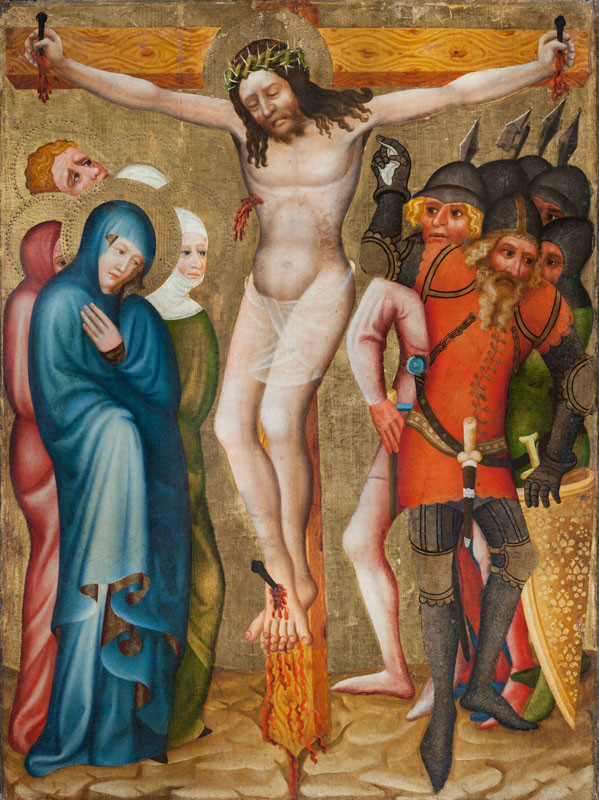
The large-dimensional panel painting of The Crucifixion originates from the Slavic-Benedictine Abbey, called Na Slovanech or Emmaus, in Prague’s New Town. It likely belonged to a larger altarpiece that was part of the abbey's original amenities. The painting is close to the style of Magister Theodoricus, as is apparent from its monumental composition, the plasticity of the slightly vague bodily volumes, the „naturalistic“ facial types with their distinctively executed eyes, and the soft draperies modelled by prominent highlights. The painter most probably worked in Theodoricus’ workshop and cooperated in decorating the Chapel of the Holy Rod. One of the characteristic features of the paintings executed by the circle of Magister Theodoricus is the use of models, templates and other workshop tools that served to mechanically copy particular forms. Void of any decorative elements, The Emmaus Crucifixion demonstrates the use of a template in the form of a cyphus-shaped flower composed of four flames and four either oval or tear-shaped forms. The given template was subsequently covered with light decoration of the captain’s shield. The use of a template identical in both dimensions and shape was also found in one of the paintings in the Karlštejn Chapel of the Holy Rod.
